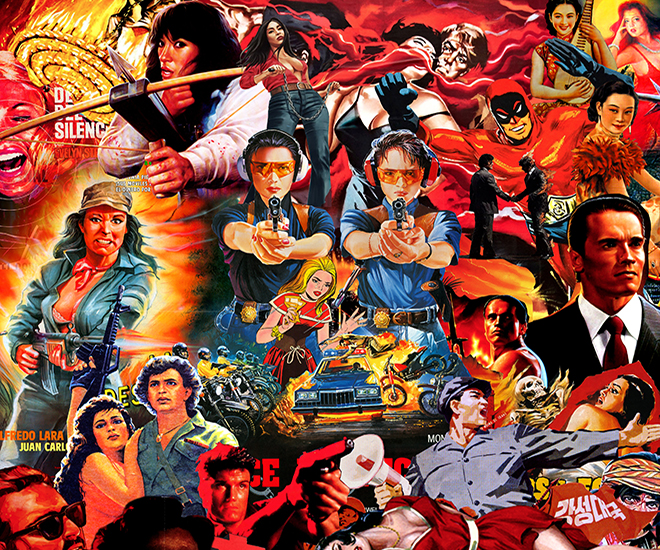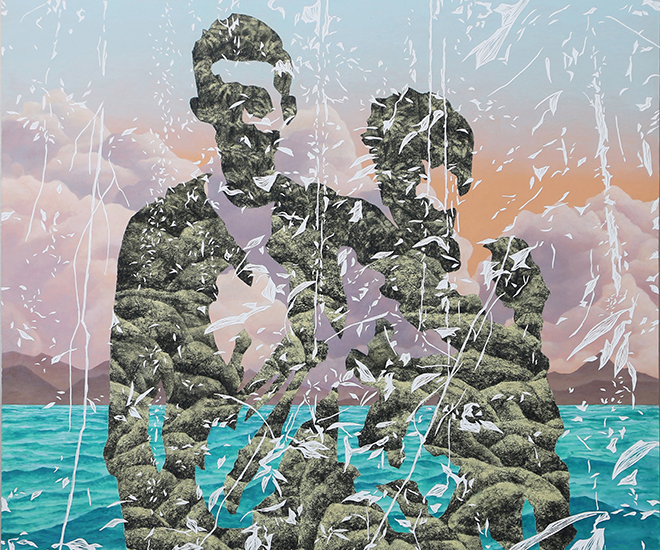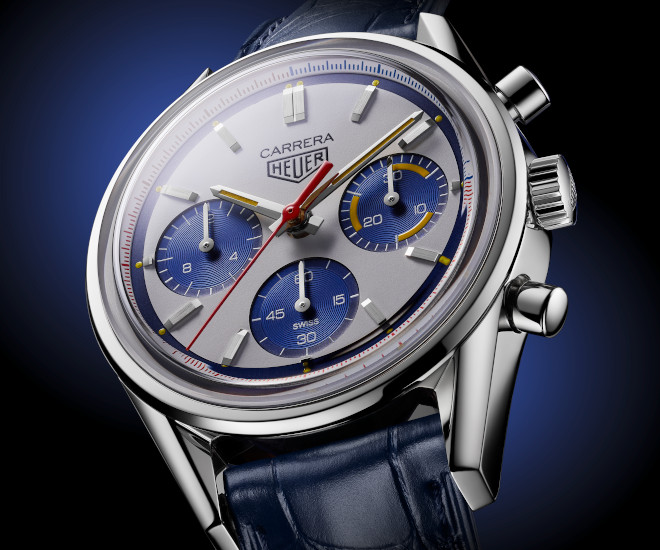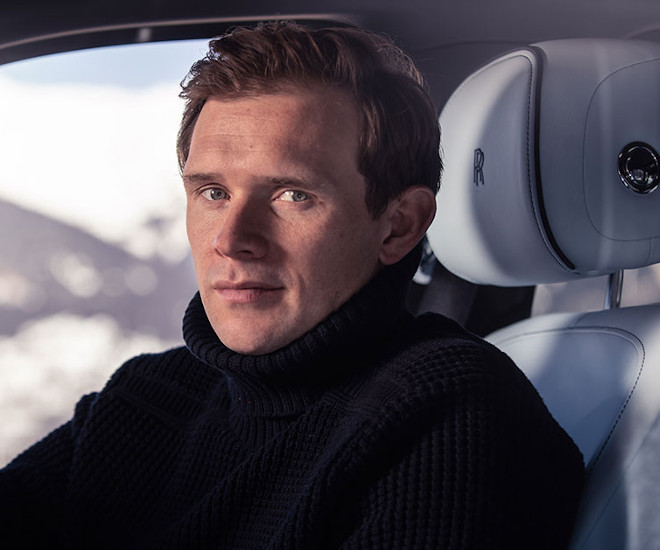Alex Innes, Head of Rolls-Royce Coachbuild Design on creating True Bespoke Luxury
It’s not everyday we talk with a man who has been involved with some of the greatest milestone designs at truly the pinnacle of automotive manufacturing. LUXUO uncovers the values which permeate every fibre of the world’s most recognisable luxury brand.

The Rolls-Royce Phantom has been emblematic of the marque.
In a world where Rolls-Royce is used as a synonym description for an object that is the pinnacle of its product class, Alex Innes, the Head of Coachbuild Design is often tasked with the unenviable task of making the Rolls-Royce of Rolls-Royces. Leading a team of extraordinary designers, engineers and craftsmen, the English marque has been responsible for some of the most iconic models of our time, while avoiding the pitfalls of simply being derivations of existing designs.
It’s not everyday that a journalist gets to talk with a man who has been involved with some of the greatest milestone designs at truly the pinnacle of automotive manufacturing – cars like the Wraith, the Cullinan and of course, the Sweptail; so naturally, this lengthy read endeavours to discover what taking ownershiup of a Rolls-Royce truly entails and distills the brand values which permeate every fibre of the world’s most recognisable luxury brand.

Alex Innes, Head of Rolls-Royce Coachbuild Design on creating True Bespoke Luxury
Beginning his tenure right out of the college, Innes worked his way into Rolls-Royce’s most valued and arguably, storied department, the Coachbuilding division, where its most groundbreaking work is done. A department which lives up to the ethos which defined Savile Row for centuries and today, part of the fabric of supreme customisation and erudite creativity which has come to define true bespoke commissions of the world’s most luxurious automobiles; in essence, creating the Rolls-Royces of Rolls-Royce.
So, Alex, tell me a little about yourself, how does one go about creating the ultimate Rolls-Royce?
I joined as a designer, and was very fortunate to develop through the varying ranks in the studio to now take on responsibility as one of the chief designers, and my contribution today for the Rolls Royce is centred around working directly with the patron. What we’ve defined as bespoke Rolls-Royce is the notion of creating motorcars that reflect the image, and the personality of the customers behind it. It is characteristic of Rolls-Royces throughout history, and in fact it is one of the elements that really separates Rolls Royce as a unique proposition to any other luxury automobile. It is a canvas onto which customers can project, their personality and their image.
The modern editions of Rolls-Royce, particularly the new Black Badge editions and Fade to Black, feel a countercultural to the sombre elegance that is associated with historic Rolls-Royce. It’s unexpected and exciting but you’ve also had to design these cars in an environment where Fast and Furious movies have entrenched perceptions of what a supercar looks like. How do you design in an environment like this without turning the ultimate driver-centric Rolls-Royce into some grotesque approximation of some other supercar?
It was useful in my design career to have joined the brand at a time when the perception of Rolls-Royce was still one of a maker of sophisticated limousines. One of the very first briefs that I was given was to create a dramatic grand tourer for the marque with the sole purpose of shifting the perception of what a Rolls Royce motorcar could be; And that was incredibly tantalising, you know, and I would suggest that that seed was sown then back in 2008 has developed into the direction for the black badge attitude that now exists. It represents a real step change in terms of people’s perception of what a, what a Rolls Royce motor car could be. And we are very delighted to say it has been an enormous success for us in attracting buyers new and old.
More controversially, the Rolls-Royce Black Badge is exceedingly popular, so much so that a bit of the limelight has kind of gone off the the Phantom. Would you ever see a future where Rolls-Royce is exemplified by the Wraith and not so much to Phantom anymore and, you know, what would it say in terms of of branding and to you, what would it say about Rolls Royce as a car, and what it stands for?
I can’t speak for your part of the world but from what we understand, globally, it is quite the opposite. Actually of what you described. It’s important to understand that the Phantom is our flagship. It is a demonstration of great design acuity and wonderful artisanship, but more importantly, it is the most powerful representation for the character traits that make up a Rolls-Royce, that includes exclusivity. It is extremely exclusive for very good reason, because it sits at the apex of what we determined to be our pinnacle product offer. Wraith on the other hand, is a completely different proposition. It is designed to be a much more casual and much more approachable, much more drive orientated Rolls-Royce, and of course, that resonates more strongly with differing parts of the world where there are potentially more driver orientated. Yeah, mentality. And of course that in turn will influence the success of that car locally, and I don’t know whether that is the case in Southeast Asia. But I can say the on a global level, the positioning that we wanted to achieve with the Phantom has grown and continues to be very very stable, which is something that we set out to achieve in the first place.
What would you say with your design muse for the Rolls-Royce Sweptail? Did you take any particular inspiration? it’s curvy in just the right places but it’s doesn’t look like your usual performance vehicle; it was completely unexpected and you couldn’t tell where the design cues begin or end…
I’m glad you described it the way that you did because that was certainly the intention. And to be really open with answering your question, it was really guided by the definition of the design in collaboration with the customer who was a super-yacht and aircraft specialist. I think the unique elements as I mentioned related to Rolls Royce motor cars that as a designer, not only are we charged with this great responsibility to move what is presumptively an iconic marque, but also to do so in close partnership together with our patrons and the Rolls-Royce Sweptail is a great example of the commission model that we work on, which is something that I think prompts people to describe us as more of a luxury brand than an automotive manufacturer.
The Rolls-Royce Sweptail is emblematic of a commission model where we are sitting down with a client and understanding their aspirations, wants and desires. We’re all familiar with the term bespoke and unfortunately, it is a term overused in modern society. We can trace the definition of ‘bespoke’ back to Savile Row as a tailoring term derived from the terminology of when a cloth was cut for a specific customer and set to one side, and it was to be spoken for that individual.

If you break that down in the sense of the relationship was actually between the cutter and the patron and not the tailor as many people think, in the same way as Rolls-Royce’s relationship is between the designer, and the patron, but more importantly the understanding of the client came before the fact. And that is a true quintessential commissioned model. In the same way that you would commission house with an architect. And that’s how we work within the automotive industry. We never necessarily know beforehand where a collaboration with a particular individual would lead us. The Rolls-Royce Sweptail achieved a new level of ambition for us in terms of fashioning a wholly new exterior and interior design around the desires of that particular gentleman, but it also allowed us to venture into a completely new definition of character for the marque.
Even if it was a new and unexpected design language from Rolls-Royce, it was very much translated from the guiding descriptions that the client gave us – a strong formal upright frontal area that was a signature trait of a Rolls Royce but softened with a taper in terms of the line and overall volume of the car as it moved through to the rear. So, he was not guiding the pencil within the studio in terms of telling us exactly what to create, he was describing a certain philosophy and principle of representation that he wanted the car to imbue and we were able to then translate that into, into the final model.

The golden age of Rolls-Royce during the Interwar period: Silver Cloud II
Would you be able to share what some of your visual references when it comes to designing a vehicle such as this?
The Rolls-Royce Sweptail in particular, was a mixture of things. We referenced quite heavily what we consider is the golden age of coach building for Rolls-Royce (the interwar period). Those days, the bodies were fashioned by external coach builders according to the tradition at the time and Rolls Royce was merely providing the rolling chassis.
What was distinctive then is that it allowed the coach builder to create a unique identity, but also for the cars to reflect the character and personality of the commissioning client. This was a period where these Rolls-Royces took on a grander sense of occasion and scale, the like of which we have never seen since. And this, in many ways, still serves as a guiding reference today.

The original Silver Cloud
It was particularly central to the development of Rolls-Royce Sweptail that the client wanted to reimagine. It was representative of the grandiosity that existed in these early Silver Clouds, but at the same time it wasn’t some historic pastiche. He also wanted to fuse with it the modernity of some more contemporary references. I was very lucky to spend quite a lot of time with him on various yachts and boats where he was referencing the lines and the volumes and, particularly at the rear, where the, the stern of two yachts that he actually owned we were guided by his particular passion for yachts.
Was it hard for Rolls-Royce to design an SUV that didn’t look like a typical SUV because if you look at all the other marques out there now they’re just different flavours of SUV. With the Cullinan, you created something entirely unique, just how hard was it?
The Rolls-Royce Cullinan was a result of a very different approach. I have to say it’s heartwarming to hear your observations of the wider SUV sector because this was exactly our impression as well: that nobody had really challenged it, and there was this feeling that some other marques were working on derivations of something that already existed. We knew right from the very beginning that we had to create the Rolls-Royce of SUVs.
With the Rolls-Royce Cullinan, there were two factors that really allowed us to do that. First and foremost, it was the opportunity to work with a standalone aluminium architecture that is unique to Rolls-Royce. We called it the architecture of luxury because it was proprietary architecture specific to Rolls Royce, and what it means is that we can create totally unique proportions volumes and heights like a big Meccano set: as a result, the Cullinan represents a unique proposition that can’t be traced back to anything else, you can’t spot the bone structure or the DNA of anything else, it stands in its own space as a totally unique Rolls-Royce. This was a strategic decision made by the brand several years ago to ensure that we have this standalone identity which is why it’s so encouraging to hear your observations.
The second element of the approach is that we took a completely different creative direction with the Cullinan. If you think about iconic Rolls-Royces styling and linework, they are elegant and genteel with a wonderful sense of grace. With Cullinan, we wanted it to be very different. We wanted to have a completely different attitude, it needed to reflect the robustness of what is Rolls-Royce’s vision for four by four capability. Rolls-Royce’s vision of the SUV also had to deliver a sense of presence the like of which we had never seen before. So it was something that we consciously wanted to depart from our normal workflow in developing saloon cars and limousines and indeed convertibles and coupe. I take comfort in your observations because we do proudly believe that Cullinan is a standalone proposition when you compare it to anything else that exists.
Rolls-Royce is very customer focused, you understand what bespoke means but at the same time, you don’t really design by consensus – you design according to what you feel is right – so how do you bring the two contrasting philosophies together because most of the time customers don’t really know what they want?
The prospect that we have within the Rolls-Royce design studio is that we are working directly with the clients, so we have a short term perspective, that we’re afforded by way of this unique dialogue melded together with this long term ambition of where we need to raise them.
The typical automotive studio only has the responsibility to anticipate what the client may or may not want In five, four to five years time from now. With Rolls-Royce, you’re taking a relatively shorter time for developing the car with us, we have that responsibility, but we’re guided by the fact that we know today what our clients are asking for, and we can shift and change our approach based on exactly what we are hearing and detecting directly from our clients.

It comes back to this analogy of the cutters on Savile Row; we detected shifting attitudes to luxury and the pandemic has been an acceleration of changing representations and definitions of luxury. Our clients taking the time to go one step further in terms of scrutinizing the substance of whatever it was that they were letting into their lives, that we’re moving away from your nakedness and then the decoration of yesteryear towards a simpler, more reduced and distilled definition of luxury. We had sensed this quite some time ago now we’re starting to feed this new paradigm into our future model developments, so you can expect a pure cleaner, more timeless definition for Rolls Royce.
Some press colleagues have asked if the pandemic has decreased our interactions with clients. In reality, it is the exact opposite because our clients have been afforded the most precious commodity – time. it’s been amazing to know that they have dedicated that newfound time towards a proposition that is deeply valued for them – the commissioning of a Rolls-Royce and they have discovered a newfound level of attention and focus poring over the details: really obsessing over the singularity of what they are creating rather than the accumulation of perceived definitions of luxury from the past.
You mentioned that you received indications that the market heading towards particular directions in terms of design, could you share what some of those signals were?
If I would put my finger on it, it was noticing subtle shifts in attitude: Our clients wanted less, but they wanted it to be better. This plays perfectly to our strengths as a luxury brand because as a business we work to a scale of scope rather than volume. We ensure that we produce very few cars to maintain that exclusivity.

The ambition is that we can commission cars together with our patrons almost without constraint. If anything, this current period is only intensifying that philosophy and this leads to patrons wanting less but in the “wanting better”, they’re prepared to really push us to make sure that the quality of materiality, the balance of proportions, the expression of lines is absolutely perfect, because when they take delivery of that car they know it is going to mean a great deal to them, and they want to ensure that it will do so for an awful long time.
In the process of designing cars like the the Black Badge or Wraith, these are basically performance vehicles and usually this genre of “sports car” is designed in such a way that it gives people who dislike you an excuse to call you a “wanker”; Was this an overarching considering during the initial conceptualisation phase? That Rolls-Royce performance vehicles should not ever give people reason to cuss you (even if under their breath)?
[Laughs] Not quite as explicitly as you described but I would mention this, and it’s something that we do talk about quite a lot within the studio that we, as a quintessentially British brand have a certain civility in our blood. I think many automotive brands take their identity and wear it on their sleeve, like referencing the Union Jack as a design element, it is quite obvious where the points of inspiration are; but for Rolls-Royce, our nationality, and our heritage, lives in our DNA. With a Rolls-Royce there’s always this sense of etiquette, and a feel for having just the right gesture, at the right moment that it’s perceptive to the situation whether it’s the careful offering of an umbrella from the door, as soon as it starts to rain or it’s indeed the fact that the coach doors open to the rear to ensure that you can access and egress the car in the most elegant fashion. There is this subtle sense of what’s right, these details extend also to people’s perception as well.
Okay, last question: before Apple gave us the iPod. We didn’t know we wanted an iPod so what’s next, what can Rolls-Royce offer us that we didn’t know we wanted?
That’s a good question and while we can’t speak about future models, I can tell you that we believe, fundamentally is that the future of luxury is individual. Our role as pioneers in luxury in the future will be defined by our ability to work together with our patrons, and for their image and their character to be captured in their Rolls-Royce motorcars, and the prospect of the power of ambition of our owners knowing that they are by common definition, highly successful people. When you take the ambition of those individuals and you pair it with one of the most iconic brands in the world, it makes for an incredibly exciting future.









